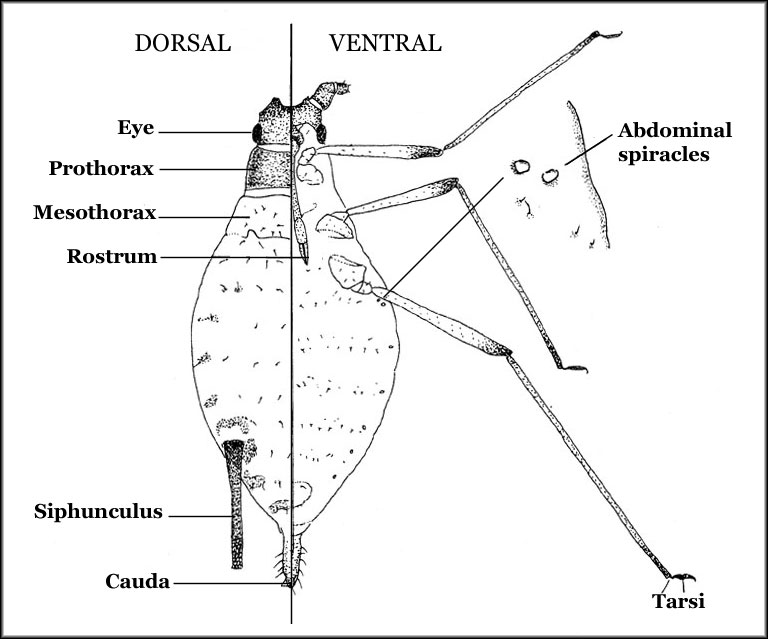Aphids (Hemiptera: Homoptera: Sternorrhyncha: Aphididae) are one of the most economically important groups of insects as agricultural pests and vectors of plant diseases. Slide mounted specimens need to be studied for making taxonomic identifications. Still, it is possible to identify the common species as well as the unusual ones based on external characters and photographs of various stages. This website provides an account of 76 species of common aphids of the southern Indian state of Karnataka (see Checklist) based on user-friendly, external characters. Some species recorded by other workers in the past have not been included here as they were not encountered during our surveys.
Individual species accounts are in the form of standard fact sheets, providing details on the scientific name, common name(s) if any, classification, a brief diagnostic description,
distribution, seasonal occurrence (in India, particularly Karnataka), and a list of common natural enemies. The fact sheets are accompanied by colour photographs of the aphids and line drawings of the diagnostic taxonomic characters.
Morphology of aphids
The morphological terms used in aphid taxonomy are illustrated below to enable easy understanding of the descriptions given in the fact sheets. Morphometric
measurements used in the descriptions are also illustrated.
Fig. 1. Body parts of an aphid 
Fig. 2. Head, dorsal view 
Fig. 3. Antenna  (Pr - Primary rhinaria; Sr - Secondary rhinaria)
Fig. 4. Abdominal apex, lateral view 
Fig. 5. Wing venation  C - Costa; Sc - Subcosta; Rs - Radial sector; M - Median; Pt - Pterostigma; Cu - Cubitus
Fig. 6. Morphometric measurements 
Abbreviations used in descriptions
A - Anal vein in forewing
Alate - Alate viviparous female
Aptera - Apterous viviparous female
bdIII - Basal diameter of antennal segment III
FTC - first tarsal chaetotaxy
h.t2 - second segment of hind tarsus
l.a.t. - lateral abdominal tubercle
p.t. - Processus terminalis
u.r.s. - Ultimate rostral segment
|

